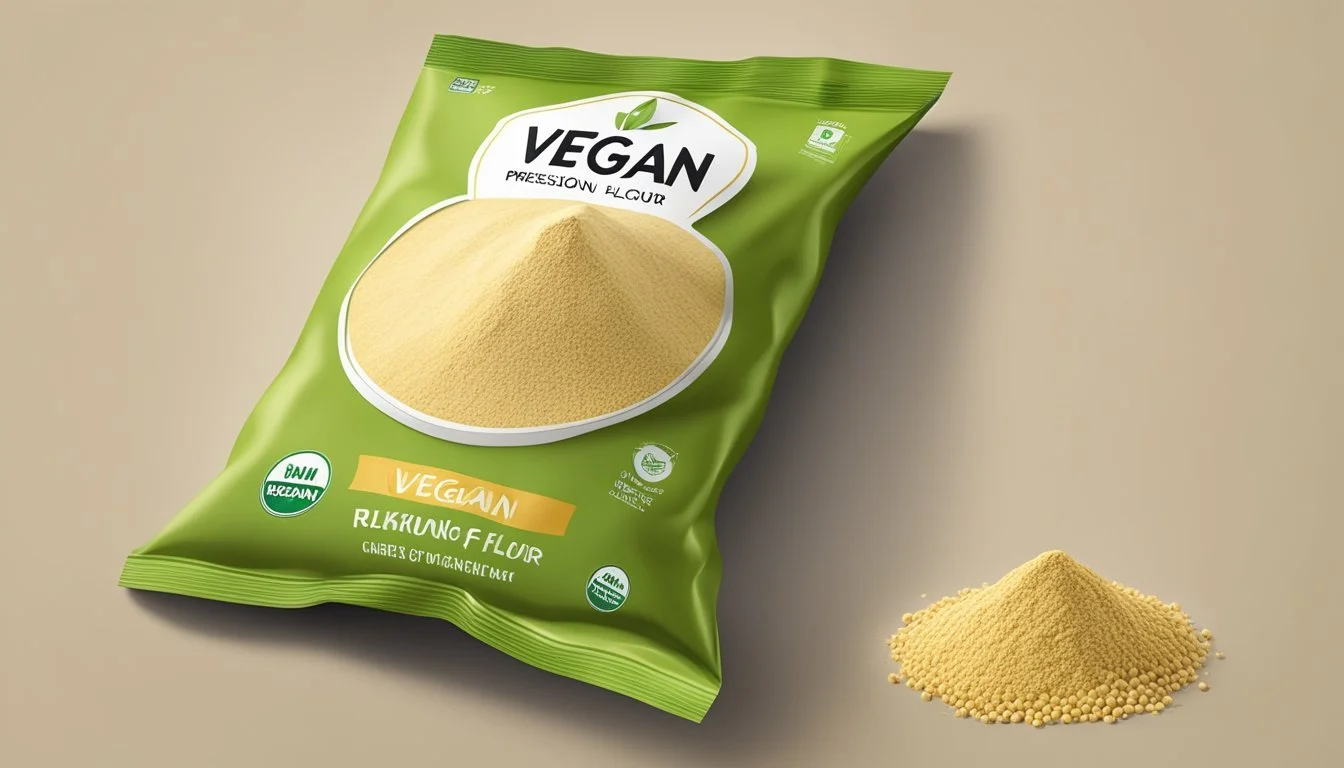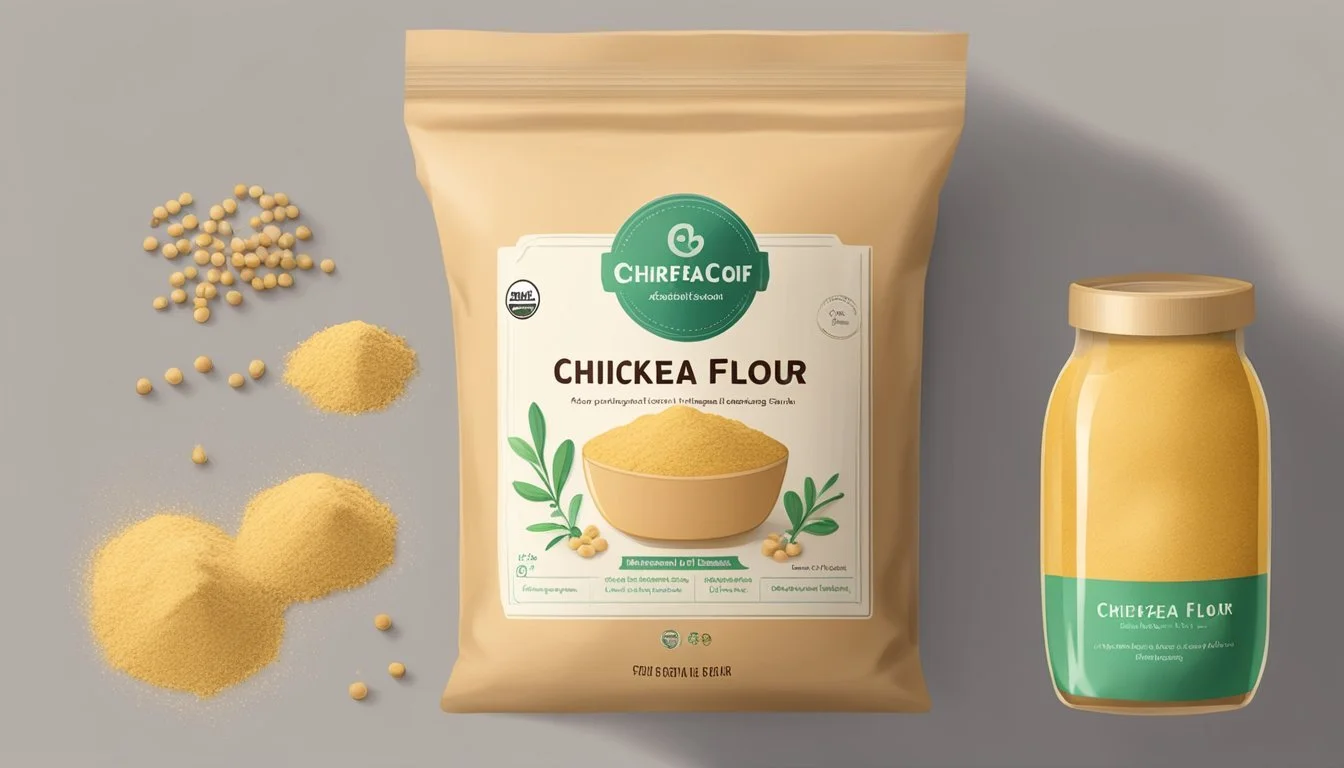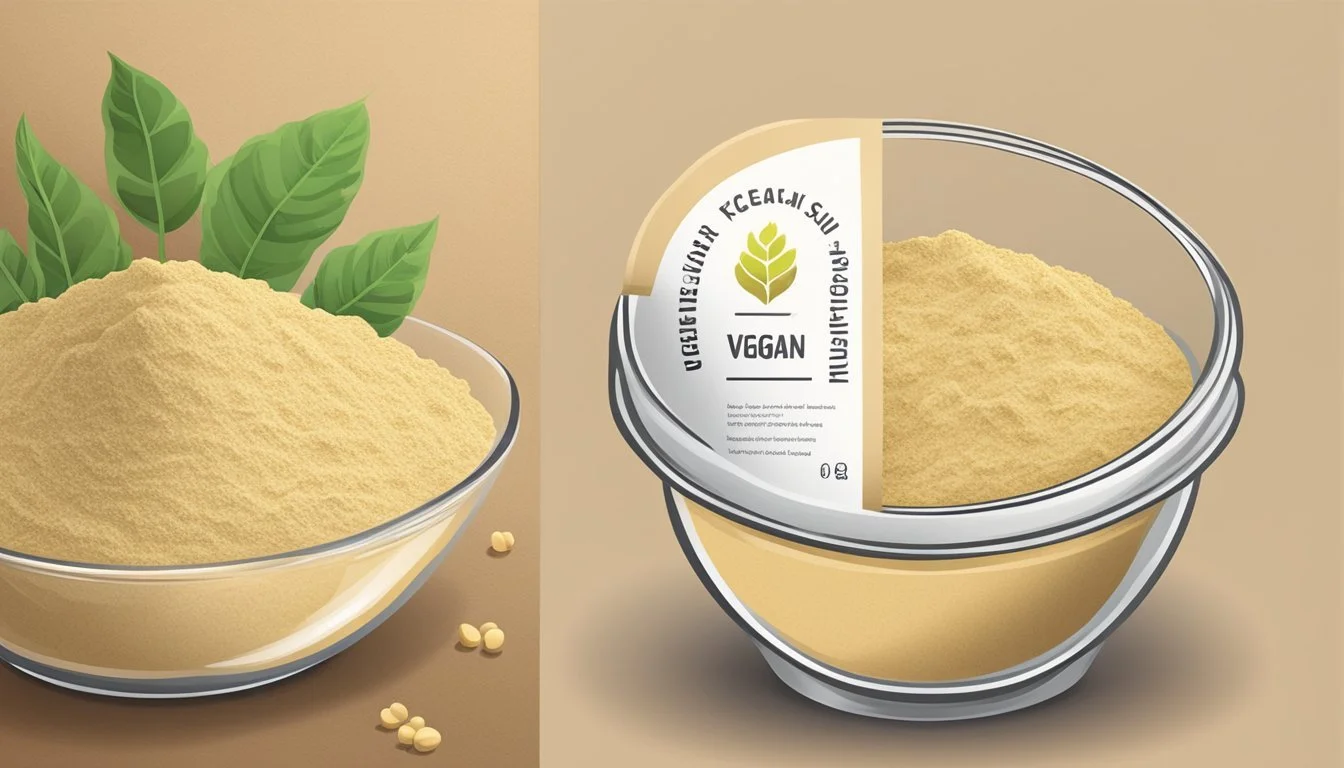Is Chickpea Flour Vegan?
Unveiling the Truth about This Plant-Based Ingredient
Chickpea flour, also known as garbanzo bean flour or besan, is a popular ingredient in many culinary traditions around the world. Derived from ground chickpeas, it is a versatile and nutritious option for various recipes, from pancakes to fritters. This plant-based flour aligns well with vegan dietary practices, as it contains no animal products or byproducts.
In the vegan kitchen, chickpea flour serves as an excellent alternative to traditional flours. Its composition—a dense source of protein, fiber, and essential nutrients—makes it a staple for those seeking to enrich their vegan meals. Versatile in its culinary uses, it can be employed as a thickening agent, binding component, or even as a base for protein-rich vegan scrambled eggs, without relying on ingredients like tofu.
The rise of veganism has influenced the expansion and availability of plant-based ingredients like chickpea flour. As a natural and unprocessed flour, it meets the criteria for vegan food, while also offering a gluten-free option for those with dietary restrictions. Its ease of use and health benefits have solidified its place as a foundational ingredient within the vegan community.
What Is Chickpea Flour?
Chickpea flour, also known as garbanzo bean flour, is a gluten-free and grain-free flour with a rich nutritional profile and versatile culinary applications, making it a favorite in vegan cooking.
Origin and Classification
Chickpea flour is derived from ground chickpeas, a staple legume in various cuisines around the world. There are two main types: garbanzo bean flour made from ground white chickpeas and besan, made from ground brown chickpeas or Chana Dal.
Nutritional Profile
Chickpea flour is a powerhouse of nutrition. It is a rich source of protein, fiber, and iron, along with essential nutrients such as potassium, folate, vitamin B6, and magnesium. The flour's dense nutritional composition makes it a healthy alternative to traditional wheat flours.
Nutrient Amount per 100g Protein 22g Fiber 11g Iron 4.86mg Potassium 846mg Folate 437µg Vitamin B6 0.535mg Magnesium 166mg
Vegan Credentials
Chickpea flour is inherently vegan, dairy-free, and egg-free, which makes it highly suitable for vegan recipes. Its binding properties allow it to act as a substitute for eggs in baking and cooking, accommodating those with vegan dietary preferences.
Culinary Uses
The flour's versatility is showcased in its various culinary uses. It is used to make flatbreads like chickpea flour naan and a diverse range of vegan recipes. Ingredients such as baking powder and baking soda can be added to chickpea flour for leavening in baking. Chickpea flour can also serve as a base for gluten-free batters and sauces.
Culinary Applications
Chickpea flour, also known as gram flour or besan, offers a versatile and nutritious ingredient in vegan cooking. It provides an egg-like texture and binding quality that can transform plant-based ingredients into delicious and wholesome dishes.
Basic Chickpea Flour Recipes
In the realm of basic chickpea flour recipes, chickpea flour pancakes and flatbread stand out as simple yet satisfying dishes. Chickpea flour can be mixed with water, spices, and a pinch of salt to create a savory pancake batter. Flatbreads like socca or farinata rely on chickpea flour as their primary ingredient, allowing for a rich, nutty flavor and a crisp texture when cooked.
Vegan Chickpea Flour Dishes
For those seeking variety in vegan diets, chickpea flour provides a base for more complex recipes. Vegan chickpea flour muffins can be baked as a convenient breakfast option, and vegan frittata or vegan omelette incorporate chickpea flour for an egg-like consistency. Chickpea tofu is another innovative dish, offering a soy-free alternative to traditional tofu, suitable for those with soy allergies or preferences.
Creative Cooking and Add-ins
Enhancing the flavor and nutrition of chickpea flour dishes is easily achievable with a myriad of add-ins. Vegetables such as spinach, mushrooms, or peppers can be added for additional fiber and vitamins. For a punch of umami and a cheesy flavor, one can introduce nutritional yeast or vegan cheese. For binding and added nutritional benefits, flaxseed meal or chia seeds serve as excellent egg substitutes in vegan cooking.
Taste and Texture Enhancements
To elevate the taste and texture of chickpea flour-based dishes, incorporating spices and seasoning is key. Popular choices include turmeric for a warm, earthy taste, and black salt (kala namak) for an eggy flavor in vegan breakfast dishes. For a light and airy texture in baked goods, allowing the batter to rest or using the right ratio of leavening agents proves critical. A touch of vegan butter or oil can also introduce richness and help achieve a desirable crumb in chickpea flour bread.
Health and Nutrition
Chickpea flour is a notable ingredient in vegan diets for its protein content and is naturally gluten-free, making it a versatile alternative for many recipes. This section explores its dietary benefits and offers tips for incorporating it into a healthy eating regimen.
Dietary Benefits
Chickpea flour is high in protein and fiber, offering a substantial nutritional profile for those following a vegan diet. A typical serving size of chickpea flour, which is about 1/4 cup (30 grams), provides an impressive amount of protein and fiber without any gluten. It's an ideal option for those with gluten sensitivity or celiac disease.
In addition to being a protein powerhouse, chickpea flour is also rich in essential vitamins and minerals. It contains significant levels of iron, magnesium, and folate, as well as other nutrients such as thiamine, phosphorus, copper, and manganese. This nutritional makeup contributes to overall health and supports a variety of bodily functions.
Tips for Healthy Eating
When utilizing chickpea flour in a vegan diet, one should consider the following for maintaining a balanced and healthy nutrition plan:
Stay Hydrated: Due to its high fiber content, consuming adequate water is important to aid digestion.
Add Nutritional Yeast: For an extra boost of flavor and nutrition, incorporating nutritional yeast into chickpea flour recipes can provide additional vitamins, particularly B-vitamins.
Serving Suggestions: Chickpea flour can serve as a base for a variety of dishes, from flatbreads like socca to vegan omelets, providing a satisfying and healthy meal component.
Create Balance: Ensure the diet includes a diverse range of foods to meet other nutritional needs, as chickpea flour should complement an overall balanced vegan diet.
Vegan-Friendly Recipes
Chickpea flour is a versatile ingredient in vegan cooking, offering a nutritious and protein-rich base for a variety of dishes, suitable for any meal of the day.
Breakfast Options
Chickpea flour provides an excellent foundation for vegan breakfasts. It can mimic eggs in texture and taste when spices like turmeric and garlic powder are added, which is ideal for creating vegan scrambled eggs. For a more traditional breakfast, vegan chickpea flour pancakes and chickpea flour waffles are both delightful options, giving the morning meal a protein-packed start.
Lunch and Dinner Ideas
For main courses, chickpea flour shines in dishes such as vegan frittata and chickpea flour tortillas. These can be filled with an assortment of veggies for a nutritious and satisfying meal. Chickpea pancakes serve as a fantastic base for savory toppings, and chickpea crepes can be wrapped around a medley of fillings for a hearty dinner. Moreover, pakora, a savory snack made by coating vegetables in chickpea flour batter and frying them, makes an appetizing side dish or main course.
Snacks and Sides
Besides pakoras, chickpea flour can be used to craft an array of snacks and sides. It performs well as a binding and thickening agent in various recipes, such as light and crispy crackers, which complement soups and salads.
Sweet Treats and Desserts
In the realm of desserts, chickpea flour is not to be overlooked. It's the base ingredient for delectable vegan-friendly treats such as chocolate chip cookies and double chocolate chickpea flour cookies. The flour adds structure to these sweet treats, making it possible to achieve a chewy, dense texture in chickpea flour cookies without the use of animal products.
Storage and Preservation
Proper storage and preservation of chickpea flour extend its shelf life and maintain its quality. It's crucial for users to understand the optimal conditions to store their chickpea flour to prevent spoilage.
Shelf Life
Chickpea flour is shelf stable and, when stored properly, can last for about 6 to 8 months. Its longevity is attributed to its low moisture content, which inhibits the growth of bacteria and mold.
Unopened Package: Store in a cool, dark place, such as a pantry.
Opened Package: Transfer to an airtight container to prevent exposure to air and moisture.
Best Practices
To maximize the shelf life and freshness of chickpea flour, certain best practices must be followed.
Airtight Containers: Always seal chickpea flour in an airtight container to protect it from humidity and pests.
Cool Environment: Keep the flour in a cool, dry place away from direct sunlight.
Refrigerator or Freezer: For longer storage, one may opt to place the airtight container in the refrigerator or freezer. This can extend the shelf life beyond the typical pantry duration.
Note: If frozen, bring the flour to room temperature before use to avoid any condensation that could affect its properties.
FAQs
Is chickpea flour vegan?
Yes, chickpea flour, also known as gram flour or besan, is vegan. It is made by grinding dry chickpeas, which are plant-based legumes.
What is chickpea flour made of?
Chickpea flour is solely composed of chickpeas with no additional ingredients, which means that it is naturally gluten-free and vegan.
Can chickpea flour be used in vegan baking?
Absolutely. Chickpea flour is a popular substitute in vegan baking. It can be used to make pancakes, frittatas, and even omelets, offering a high-protein and egg-free alternative for various recipes.
Is chickpea flour allergy-friendly?
Since it's gluten-free and nut-free, chickpea flour is considered allergy-friendly, but one should check for any specific legume allergies.
How does one store chickpea flour?
For optimal freshness, store chickpea flour in an airtight container in a cool, dry place. It can also be refrigerated or frozen to extend its shelf life.
Where can one buy chickpea flour?
Chickpea flour is available at many health food stores, online retailers, and grocery stores with well-stocked international or gluten-free sections.







